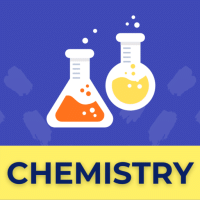Class 11 Exam > Class 11 Questions > Heating limestone at a temperature of 1070K w...
Start Learning for Free
Heating limestone at a temperature of 1070K we get:
- a)Slaked lime
- b)Quick Lime
- c)Plaster of Paris
- d)CaCO3
Correct answer is option 'B'. Can you explain this answer?
Verified Answer
Heating limestone at a temperature of 1070K we get:a)Slaked limeb)Quic...
Heating limestone at a temperature of 1070K we get quick lime i.e CaO.
View all questions of this test
Most Upvoted Answer
Heating limestone at a temperature of 1070K we get:a)Slaked limeb)Quic...
Heating Limestone to 1070K
When limestone is heated to a temperature of 1070K, it undergoes a chemical reaction that results in the formation of a new substance. The substance formed depends on the temperature to which the limestone is heated.
The chemical formula of limestone is CaCO3.
Option A: Slaked Lime
Slaked lime is produced by adding water to quicklime, which is obtained by heating limestone at a temperature of 1473K. Therefore, heating limestone at a lower temperature of 1070K cannot produce slaked lime.
Option B: Quick Lime
Heating limestone at a temperature of 1070K produces quicklime. Quicklime is also known as calcium oxide (CaO). It is produced by heating limestone to a high temperature, which causes the limestone to decompose into calcium oxide and carbon dioxide.
Option C: Plaster of Paris
Plaster of Paris is produced by heating gypsum (CaSO4.2H2O) to a temperature of 373K. Therefore, heating limestone at a temperature of 1070K cannot produce plaster of Paris.
Option D: CaCO3
Heating limestone at a temperature of 1070K does not produce CaCO3 because CaCO3 is the chemical formula of limestone itself.
Conclusion
Therefore, the correct answer is option B, which is quicklime or calcium oxide.
When limestone is heated to a temperature of 1070K, it undergoes a chemical reaction that results in the formation of a new substance. The substance formed depends on the temperature to which the limestone is heated.
The chemical formula of limestone is CaCO3.
Option A: Slaked Lime
Slaked lime is produced by adding water to quicklime, which is obtained by heating limestone at a temperature of 1473K. Therefore, heating limestone at a lower temperature of 1070K cannot produce slaked lime.
Option B: Quick Lime
Heating limestone at a temperature of 1070K produces quicklime. Quicklime is also known as calcium oxide (CaO). It is produced by heating limestone to a high temperature, which causes the limestone to decompose into calcium oxide and carbon dioxide.
Option C: Plaster of Paris
Plaster of Paris is produced by heating gypsum (CaSO4.2H2O) to a temperature of 373K. Therefore, heating limestone at a temperature of 1070K cannot produce plaster of Paris.
Option D: CaCO3
Heating limestone at a temperature of 1070K does not produce CaCO3 because CaCO3 is the chemical formula of limestone itself.
Conclusion
Therefore, the correct answer is option B, which is quicklime or calcium oxide.
Free Test
FREE
| Start Free Test |
Community Answer
Heating limestone at a temperature of 1070K we get:a)Slaked limeb)Quic...
When we heat limestone it produces calcium oxide which is also known as quick lime. So the answer is B.

|
Explore Courses for Class 11 exam
|

|
Question Description
Heating limestone at a temperature of 1070K we get:a)Slaked limeb)Quick Limec)Plaster of Parisd)CaCO3Correct answer is option 'B'. Can you explain this answer? for Class 11 2025 is part of Class 11 preparation. The Question and answers have been prepared according to the Class 11 exam syllabus. Information about Heating limestone at a temperature of 1070K we get:a)Slaked limeb)Quick Limec)Plaster of Parisd)CaCO3Correct answer is option 'B'. Can you explain this answer? covers all topics & solutions for Class 11 2025 Exam. Find important definitions, questions, meanings, examples, exercises and tests below for Heating limestone at a temperature of 1070K we get:a)Slaked limeb)Quick Limec)Plaster of Parisd)CaCO3Correct answer is option 'B'. Can you explain this answer?.
Heating limestone at a temperature of 1070K we get:a)Slaked limeb)Quick Limec)Plaster of Parisd)CaCO3Correct answer is option 'B'. Can you explain this answer? for Class 11 2025 is part of Class 11 preparation. The Question and answers have been prepared according to the Class 11 exam syllabus. Information about Heating limestone at a temperature of 1070K we get:a)Slaked limeb)Quick Limec)Plaster of Parisd)CaCO3Correct answer is option 'B'. Can you explain this answer? covers all topics & solutions for Class 11 2025 Exam. Find important definitions, questions, meanings, examples, exercises and tests below for Heating limestone at a temperature of 1070K we get:a)Slaked limeb)Quick Limec)Plaster of Parisd)CaCO3Correct answer is option 'B'. Can you explain this answer?.
Solutions for Heating limestone at a temperature of 1070K we get:a)Slaked limeb)Quick Limec)Plaster of Parisd)CaCO3Correct answer is option 'B'. Can you explain this answer? in English & in Hindi are available as part of our courses for Class 11.
Download more important topics, notes, lectures and mock test series for Class 11 Exam by signing up for free.
Here you can find the meaning of Heating limestone at a temperature of 1070K we get:a)Slaked limeb)Quick Limec)Plaster of Parisd)CaCO3Correct answer is option 'B'. Can you explain this answer? defined & explained in the simplest way possible. Besides giving the explanation of
Heating limestone at a temperature of 1070K we get:a)Slaked limeb)Quick Limec)Plaster of Parisd)CaCO3Correct answer is option 'B'. Can you explain this answer?, a detailed solution for Heating limestone at a temperature of 1070K we get:a)Slaked limeb)Quick Limec)Plaster of Parisd)CaCO3Correct answer is option 'B'. Can you explain this answer? has been provided alongside types of Heating limestone at a temperature of 1070K we get:a)Slaked limeb)Quick Limec)Plaster of Parisd)CaCO3Correct answer is option 'B'. Can you explain this answer? theory, EduRev gives you an
ample number of questions to practice Heating limestone at a temperature of 1070K we get:a)Slaked limeb)Quick Limec)Plaster of Parisd)CaCO3Correct answer is option 'B'. Can you explain this answer? tests, examples and also practice Class 11 tests.

|
Explore Courses for Class 11 exam
|

|
Signup for Free!
Signup to see your scores go up within 7 days! Learn & Practice with 1000+ FREE Notes, Videos & Tests.























